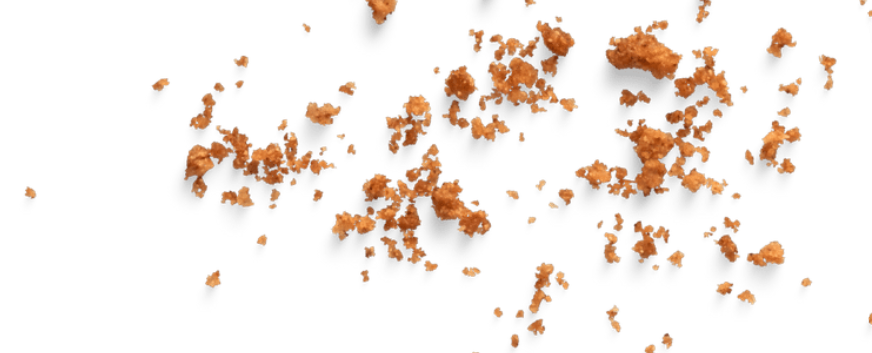That’s the Way the Cookie Crumbles: Google Cookies Are Here to Stay (For Now)

The digital marketing world is abuzz with news about Google’s plan to phase out third-party cookies, which was supposed to mark the end of an era. Marketers everywhere were ready to bake up new strategies, as they prepared for the day when third-party cookies would crumble away for good. However, in a surprising twist, it’s not yet time to toss out the cookie jar. Google has announced that cookies are sticking around—for the time being.
The Cookie That Keeps on Giving
For those who may not be familiar with the details, Google announced in 2020 that it would be phasing out third-party cookies in its Chrome browser by 2022, later pushing the deadline to 2024. This move was intended to enhance privacy for users by reducing the tracking of online behavior. Third-party cookies, after all, are the digital equivalent of crumbs left behind, helping advertisers to track and serve up targeted ads.
But recently, in a surprising (though not entirely unexpected) development, Google announced it will delay the phase-out of third-party cookies even further, possibly until 2025. So, why the change of heart? Is it a case of biting off more than they could chew?

The Doughy Details
The reason for the delay is not just about giving marketers more time to adjust their recipes. Google has recognized that developing a suitable alternative to third-party cookies is more complex than expected. They’re working on what’s known as the “Privacy Sandbox” initiative—a set of tools designed to protect user privacy while still allowing for effective advertising. However, rolling out these tools has proven to be a longer process than originally anticipated.
The Privacy Sandbox initiative, including proposals like Federated Learning of Cohorts (FLoC) and its successor, the Topics API, aims to gather data in a way that’s less invasive but still useful for advertisers. However, the industry’s reaction to these initiatives has been mixed, with some stakeholders concerned about their effectiveness and the potential impact on competition. Specific complaints include a lack of frequency capping and the absence of external controls on Google’s oversight.
A Mixed Batch: Industry Reactions
Many marketers and advertisers have mixed feelings about the delay. On the one hand, it’s helpful to receive extra time to prepare, adjust your strategies, and find alternative ingredients (like first-party data). On the other hand, it prolongs the uncertainty. No one knows for sure what the final result for digital advertising will look like once the cookies are eventually phased out. This uncertainty leaves a bitter taste in the mouths of many.
The delay means that for now, businesses can continue using third-party cookies as a key ingredient in their marketing mix. But make no mistake—the cookie jar won’t be open forever. Eventually, marketers will need to be ready with fresh strategies that do not rely on the sweet taste of third-party data.

What’s Next for Your Marketing Strategy?
With third-party cookies sticking around for a little longer, it’s tempting to kick back and enjoy those tasty morsels for as long as they last. However, savvy marketers know that this is the perfect time to experiment with new sources and tools. Here are a few things to consider as you prepare for the cookie-less future:
- First-Party Data Collection: Think of this as your secret family recipe. Building and nurturing first-party data—information you collect directly from your customers—will be crucial. Focus on creating compelling content and experiences that encourage users to share their data willingly.
- Contextual Advertising: Just like blending complementary ingredients in a recipe, contextual advertising ensures your ads are relevant to the content they appear alongside. It’s an effective way to reach your audience without relying on tracking cookies.
- Privacy-Focused Strategies: Consumers are more concerned than ever about privacy, and they expect brands to respect their preferences. Be transparent about data collection and usage, and consider offering more control to your users.
- Stay Informed: The digital marketing landscape is constantly evolving, and the future of cookies is still up in the air. Stay updated on developments in the Privacy Sandbox and other privacy-related initiatives, so you can adjust your strategy as needed.

Final Tidbits
The latest news about Google’s cookies is yet another plot twist in the ongoing digital data saga. While the delay affords you more time to prepare, it’s important not to rely too heavily on this familiar approach. The time to start experimenting with new strategies is now—before the cookies cease for good.
In the meantime, leverage this grace period to refine your marketing strategies. At Ciniva, we are staying on top of the latest developments and honing our strategy. We are positioned to deliver top results to our clients now and into the future–with or without cookies. Keep in mind the day will come when third-party cookies are off the menu. When that happens, you’ll want to be ready with a fresh batch of strategies that are just as effective—if not more so—than the ones you’re using today.
That’s just the way the cookie crumbles.
Sources:
- (2023). “Updates to the Privacy Sandbox and third-party cookies”.
- The Verge. (2023). “Google delays cookie phase-out until 2025”.
- https://crimtan.com/why-googles-new-topics-has-received-a-lukewarm-reception-and-three-problems-we-have-with-it/